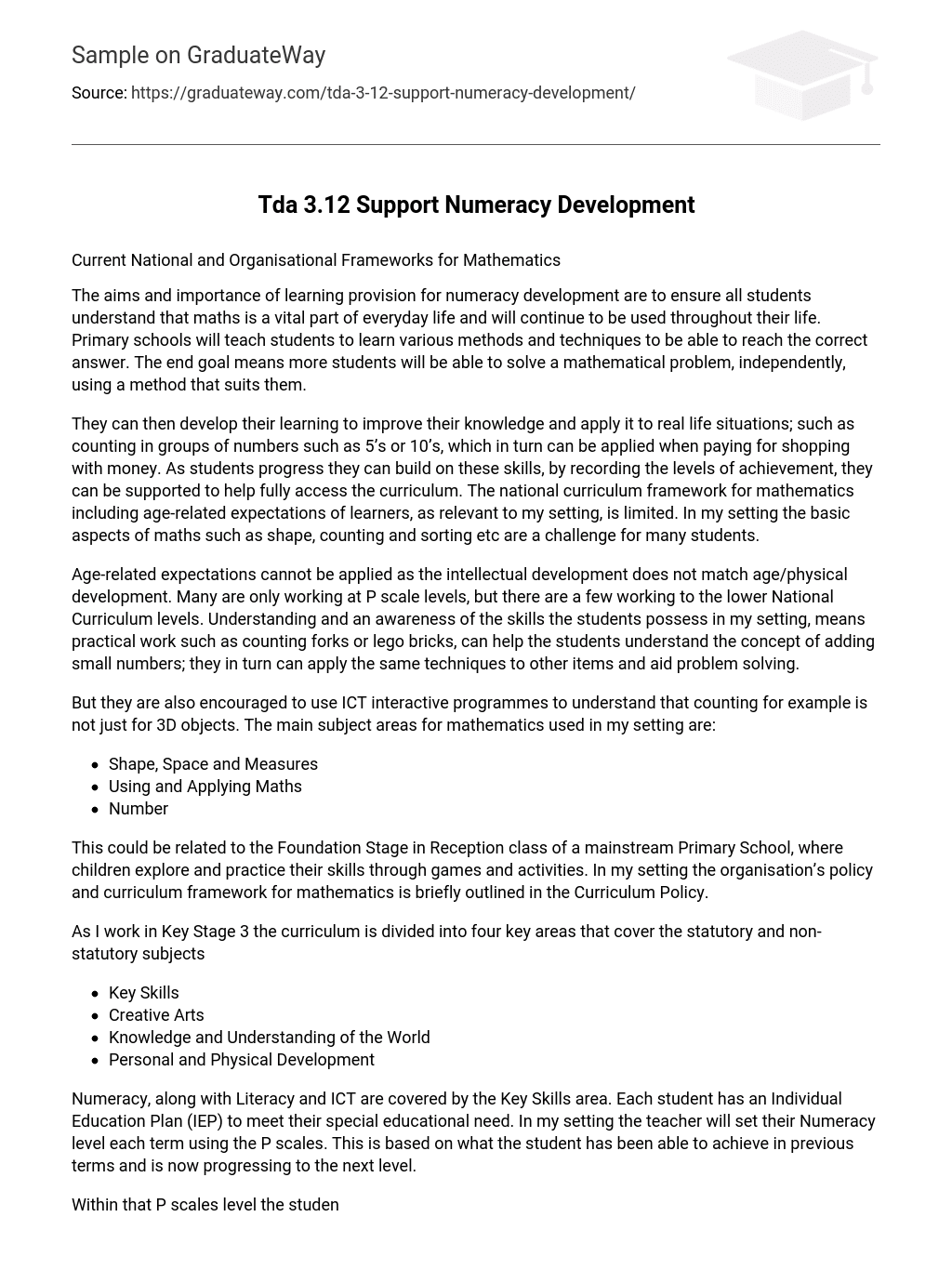Current National and Organisational Frameworks for Mathematics
The aims and importance of learning provision for numeracy development are to ensure all students understand that maths is a vital part of everyday life and will continue to be used throughout their life. Primary schools will teach students to learn various methods and techniques to be able to reach the correct answer. The end goal means more students will be able to solve a mathematical problem, independently, using a method that suits them.
They can then develop their learning to improve their knowledge and apply it to real life situations; such as counting in groups of numbers such as 5’s or 10’s, which in turn can be applied when paying for shopping with money. As students progress they can build on these skills, by recording the levels of achievement, they can be supported to help fully access the curriculum. The national curriculum framework for mathematics including age-related expectations of learners, as relevant to my setting, is limited. In my setting the basic aspects of maths such as shape, counting and sorting etc are a challenge for many students.
Age-related expectations cannot be applied as the intellectual development does not match age/physical development. Many are only working at P scale levels, but there are a few working to the lower National Curriculum levels. Understanding and an awareness of the skills the students possess in my setting, means practical work such as counting forks or lego bricks, can help the students understand the concept of adding small numbers; they in turn can apply the same techniques to other items and aid problem solving.
But they are also encouraged to use ICT interactive programmes to understand that counting for example is not just for 3D objects. The main subject areas for mathematics used in my setting are:
- Shape, Space and Measures
- Using and Applying Maths
- Number
This could be related to the Foundation Stage in Reception class of a mainstream Primary School, where children explore and practice their skills through games and activities. In my setting the organisation’s policy and curriculum framework for mathematics is briefly outlined in the Curriculum Policy.
As I work in Key Stage 3 the curriculum is divided into four key areas that cover the statutory and non-statutory subjects
- Key Skills
- Creative Arts
- Knowledge and Understanding of the World
- Personal and Physical Development
Numeracy, along with Literacy and ICT are covered by the Key Skills area. Each student has an Individual Education Plan (IEP) to meet their special educational need. In my setting the teacher will set their Numeracy level each term using the P scales. This is based on what the student has been able to achieve in previous terms and is now progressing to the next level.
Within that P scales level the students will have a list of expectations. However, some students may not be able to move on to the next level as their disability prevents them or they have only reached a small percentage of expectations and may stay on the same P scale for several terms. In my setting the teacher’s programme and plans for mathematics teaching and learning begin with the Medium Term Plans that are available in the classroom for all the staff to view. From there the individual class lessons have designated times for work on Key Skills which incorporate Numeracy.
Each student has their own individual numeracy target which is monitored by a recording sheet to chart their progress which records what has been achieved; was the work done independently or with prompting; frequency of completing the target. A work tray will have been compiled of the necessary resources for the Numeracy task. A student may be working on shape/colour recognition; the resources may contain a tracing card with a square, a circle and a triangle; a pencil and paper. Then the student is asked to trace the shape which may require hand over hand support.
Other resources will also be used but using a different approach such as solid shapes in various colours, the student will be shown a shape and asked “what is the shape?” or more simply “it’s a ….. ” leaving time for the student to respond and complete the sentence. They may be asked to “take the yellow circle” from a choice of two shapes. Progress is then recorded and will aid the teacher to plan for future lessons depending on the progress made or whether the task is achievable and needs adapting to best suit the ability of the student.





